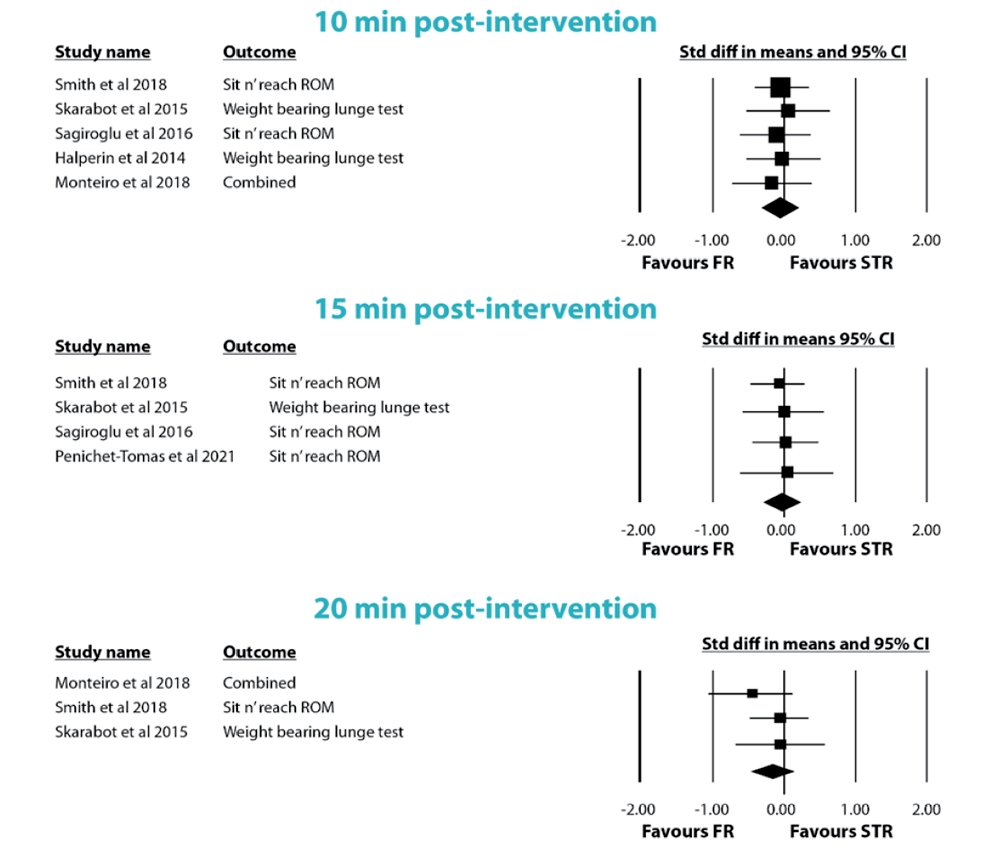Move it: can foam beat stretching?

Andrew Sheaff looks at new research comparing the benefits of foam rolling vs. conventional stretching for athletic performance
Regardless of your sport, range of motion matters. You need to have the necessary range of motion in the appropriate joints to safely achieve the positions required for good technique. This is true whether your sport of choice requires very large ranges of motion or more modest ones. Impairments in range of motion in certain joints can reduce performance because you’re unable to create the necessary force for optimal performance. Worse still, if you can’t achieve the necessary range of motion, you could be setting yourself up for injury.Flexibility tools
The benefits of improving your flexibility for running have been explored in a recent Sports Performance Bulletin article. That article details the specifics of how improving your range of motion can improve your training and your performance. However, this same premise applies to any sport you choose. This is particularly true if you don’t possess the optimal range of motion for sport. To address that issue, you can temporarily expand your range of motion through foam rolling, allowing you to then train using your newly acquired range of motion. Not only does this strategy allow you to train safely and more effectively, it allows you over the longer term to make these temporary improvements in range of motion more permanent.However, while foam rolling can undoubtedly be used as a tool to enhance range of motion, not everyone enjoys foam rolling. In fact, some hate it! Since we tend to avoid that which we don’t like, this can present a real problem for someone who would really benefit from an acute increase in range of motion. And even if you love foam rolling, you might not always have ready access to a foam roller. Good training is often making the best of a mediocre situation; if you find yourself without access to a foam roller, it’s valuable to have an alternative option that can be used at just about any time and in just about any place. Fortunately, researchers have demonstrated that such an option exists, and it’s one we’re all familiar with.
To stretch or roll?
In recent years, static stretching has fallen out of favor relative to the new kid on the block - foam rolling. An international group of researchers from all sought to investigate whether this trend had any merit, specifically in terms of acute changes in range of motion. The researchers conducted a meta-analysis with the goal of comparing the outcomes of foam rolling and static stretching interventions(1). Overall, 20 studies met their inclusion criteria and were analyzed in the study.As the researchers were mostly interested in the short-term impact of these interventions, they were analyzed the range of motion outcomes at 0, 10, 15, and 20-minutes after either foam rolling or stretching. Considering our interest in using stretching and foam rolling to acutely improve range of motion (ie in the period immediately after rolling/stretching), the researchers in this study asked the perfect question – allowing them to see the impact of both options on short-term changes in range of motion.
When all of the pooled data from these were number crunched, it turned out that regardless of whether subjects performed static stretching or foam rolling, there was absolutely no significant difference in the improvement in range of motion. This was true at all time points, whether immediately after mobilization, or 20 minutes later (see figure 1). It seems that regardless of the approach you take, you can expect a similar and significant acute improvement in range of motion.
Figure 1: Analysis of studies comparing foam rolling and stretching

The three charts above show comparisons of foam vs. stretching interventions at 10, 15 and 20 minutes after the intervention. A score below -1 indicates that foam rolling was statistically significantly more effective than stretching. A score over +1 shows that stretching was more effective than foam. A score between -1 and +1 (ie close to zero, [all of the studies above]) shows that the interventions were equally effective.
Putting it into practice
The best training plans are the ones that actually get done. If you can’t stand stretching, the odds are that you won’t do it regularly. And if you can’t stand foam rolling, you probably won’t do that with any consistency, either. Fortunately, when you have two options that produce similar outcomes, you have the luxury of choosing which to implement. For some, it is a matter of enjoyment. If you can’t stand foam rolling or you can’t stand static stretching, you can rest easy knowing that you’ll get the same benefits from choosing either option. There’s no need to punish yourself when there’s a more enjoyable option that works just as well!For others, it is a matter of practicality. You may prefer foam rolling, yet you don’t have access to a roller for some reason – for example, you may be travelling or you may be performing an impromptu training session. If you find yourself in a similar situation, remember that there were no differences in the changes in range of motion between stretching or foam rolling when measured 0, 10, 15, and 20-minutes after each mobilization. Assuming you’re going to be performing your mobility intervention within 20 minutes of beginning your main training, you can be confident that stretching will allow you to perform the necessary mobility work to optimize your performance.
Stretching limitations
It’s important to recognize that there is the general perception that static stretching can compromise short-term performance, and thus is an inferior option to foam rolling. However, one of the researchers responsible for the current meta-analysis was also part of a review that examined the impact of static stretching on performance(2). The authors in that study concluded that static stretching only becomes problematic when extended stretching durations are used, the target activity relies on high forces, and when no other warm-up is performed - a situation unlike the vast majority of endurance activities. However, even in the situation where all these criteria are true with long-duration stretching compromising immediate high-intensity performance, when range of motion is limits activity, mobilization may still be the right move.In summary
Good training is all about having options. While it would be nice if we could always follow the preferred plan, life has a habit of getting in the way. By having options, you can navigate these challenges smoothly without stress, allowing you to stay on track with accomplishing your goals. When it comes to acutely enhancing your range of motion, foam rolling seems to be the popular option for create short-term improvements. However, it’s important to recognize that stretching remains an equally powerful option, one that requires no equipment and can be done anywhere. For busy athletes that need be able to adjust their plans as needed, it remains a valuable tool in the toolbox.References
- Eur J Appl Physiol. 2022 Mar 17. doi: 10.1007/s00421-022-04927-1. Online ahead of print.
- Eur J Appl Physiol. 2011 Nov;111(11):2633-51
You need to be logged in to continue reading.
Please register for limited access or take a 30-day risk-free trial of Sports Performance Bulletin to experience the full benefits of a subscription. TAKE A RISK-FREE TRIAL
TAKE A RISK-FREE TRIAL
Newsletter Sign Up
Testimonials
Dr. Alexandra Fandetti-Robin, Back & Body Chiropractic
Elspeth Cowell MSCh DpodM SRCh HCPC reg
William Hunter, Nuffield Health
Newsletter Sign Up
Coaches Testimonials
Dr. Alexandra Fandetti-Robin, Back & Body Chiropractic
Elspeth Cowell MSCh DpodM SRCh HCPC reg
William Hunter, Nuffield Health
Keep up with latest sports science research and apply it to maximize performance
Today you have the chance to join a group of athletes, and sports coaches/trainers who all have something special in common...
They use the latest research to improve performance for themselves and their clients - both athletes and sports teams - with help from global specialists in the fields of sports science, sports medicine and sports psychology.
They do this by reading Sports Performance Bulletin, an easy-to-digest but serious-minded journal dedicated to high performance sports. SPB offers a wealth of information and insight into the latest research, in an easily-accessible and understood format, along with a wealth of practical recommendations.
*includes 3 coaching manuals
Get Inspired
All the latest techniques and approaches
Sports Performance Bulletin helps dedicated endurance athletes improve their performance. Sense-checking the latest sports science research, and sourcing evidence and case studies to support findings, Sports Performance Bulletin turns proven insights into easily digestible practical advice. Supporting athletes, coaches and professionals who wish to ensure their guidance and programmes are kept right up to date and based on credible science.








